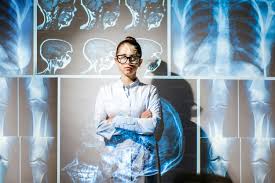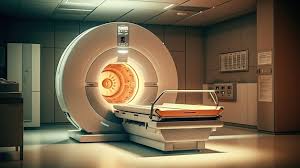In the realm of modern medicine, few fields are as pivotal to patient diagnosis and treatment as radiology. As a multidisciplinary branch of healthcare, radiology employs advanced imaging technologies to visualize the internal structures of the human body non-invasively. This capacity to “see” into the human body allows healthcare providers to make informed decisions about patient management, ultimately enhancing the quality of care. This essay delves into the various dimensions of radiology, its technological advancements, its significance in various healthcare settings, and the ethical considerations inherent in its practice.
The Evolution of Radiology
The history of radiology traces back to the late 19th century with the discovery of X-rays by Wilhelm Conrad Röntgen in 1895. This monumental advancement not only revolutionized the medical field but also laid the foundation for other imaging modalities, such as computed tomography (CT), magnetic resonance imaging (MRI), and ultrasound. Each of these technologies has offered incremental improvements in terms of image quality, speed, and safety. For instance, MRI leverages magnetic fields and radio waves to produce detailed images of soft tissues, while CT combines multiple X-ray images for cross-sectional views.
As technology advances, radiology continues to evolve, with innovations such as artificial intelligence (AI) and machine learning playing an increasingly significant role. These technologies assist radiologists in interpreting images more accurately and efficiently, potentially leading to earlier diagnoses and better patient outcomes. The integration of AI into radiology not only streamlines workflow but also provides a secondary layer of review, enhancing diagnostic confidence.

The Role of Radiology in Healthcare
Radiology serves multiple crucial functions within healthcare, ranging from diagnostic imaging to therapeutic interventions. The role of diagnostic radiology is perhaps its most well-known aspect. Physicians rely on radiological examinations to detect a range of conditions, from fractures and tumors to internal bleeding and infections. Early detection facilitated by radiological imaging can significantly improve patient prognoses, making timely intervention possible.
Beyond diagnostics, radiology also plays a therapeutic role. Interventional radiology employs imaging guidance to perform minimally invasive procedures—such as angioplasty and biopsies—providing an alternative to more invasive surgical methods. This aspect of radiology not only reduces recovery times for patients but also minimizes the risks associated with traditional surgeries.
In recent years, the application of radiology has expanded to include personalized medicine. Radiologists are increasingly involved in tailoring treatment plans based on individual patient characteristics, utilizing imaging techniques to monitor disease progression and treatment responses. This trend signifies a shift towards a more nuanced approach to healthcare, where diagnostic imaging is integral to patient management.
Challenges and Ethical Considerations
While the benefits of radiology in healthcare are manifold, certain challenges and ethical considerations warrant attention. One primary concern is radiation exposure. Even though modern imaging techniques are designed to minimize this risk, the cumulative exposure over a patient’s lifetime remains a subject of scrutiny. Radiologists must balance the need for high-quality diagnostic images with the imperative to limit radiation exposure.
Additionally, the increasing reliance on advanced technologies such as AI raises ethical questions about privacy and the role of human oversight. While AI has the potential to enhance diagnostic accuracy, there exist concerns about the potential for biases in algorithms and the implications of machine-generated diagnoses. Healthcare providers, therefore, must remain vigilant in ensuring that human expertise is not overshadowed by technological advancements.
Finally, discrepancies in access to radiology services pose considerable challenges in healthcare equity. Disparities in the availability of imaging technologies, especially in rural or underserved communities, can lead to delays in diagnosis and treatment. Addressing such inequities requires concerted efforts from policymakers and healthcare providers alike.
Conclusion
Radiology serves as a vital window into the human body, transforming patient care through innovative imaging techniques and therapeutic interventions. As technology continues to advance, the field of radiology must adapt to new challenges while remaining committed to ethical considerations and equity in healthcare access. The integration of AI and other technologies signals an exciting future for radiology, with the potential for more accurate diagnoses and improved patient outcomes. As we look forward, ongoing research and dialogue among healthcare professionals will be essential to navigate the complexities of this essential field.
Frequently Asked Questions (FAQs)
- What is radiology?
Radiology is a medical specialty that utilizes imaging technologies to visualize the internal structures of the body for diagnostic and therapeutic purposes. - What are the main types of imaging techniques in radiology?
The main types of imaging techniques include X-rays, computed tomography (CT), magnetic resonance imaging (MRI), ultrasound, and nuclear medicine. - How does radiology benefit patient care?
Radiology enhances patient care by enabling early diagnosis of conditions, guiding therapeutic interventions, and facilitating personalized treatment plans. - What are the risks associated with radiological imaging?
One primary risk is radiation exposure, particularly with X-ray-based modalities. However, modern techniques are designed to minimize this risk. - How is artificial intelligence impacting radiology?
AI is improving the accuracy and efficiency of image interpretation, assisting radiologists in making diagnoses and identifying potential anomalies more swiftly. However, ethical considerations surrounding AI use must be addressed.
In summary, radiology stands as a cornerstone of contemporary healthcare, illuminating our understanding of human anatomy and pathology, and fostering advancements that hold the promise of improved health outcomes for all.



















